Have you been searching the world over for the perfect scone recipe? Well, this recipe for light and flaky scones is, I believe, exactly what you’ve been looking for. These delicious scones are perfectly flaky, buttery, and just barely sweet– making them the perfect pair for a cup of good tea and a dollop of your favorite jam.
This is the kind of buttery scone recipe you will want for Mother’s day, birthdays, girls’ nights, and more.
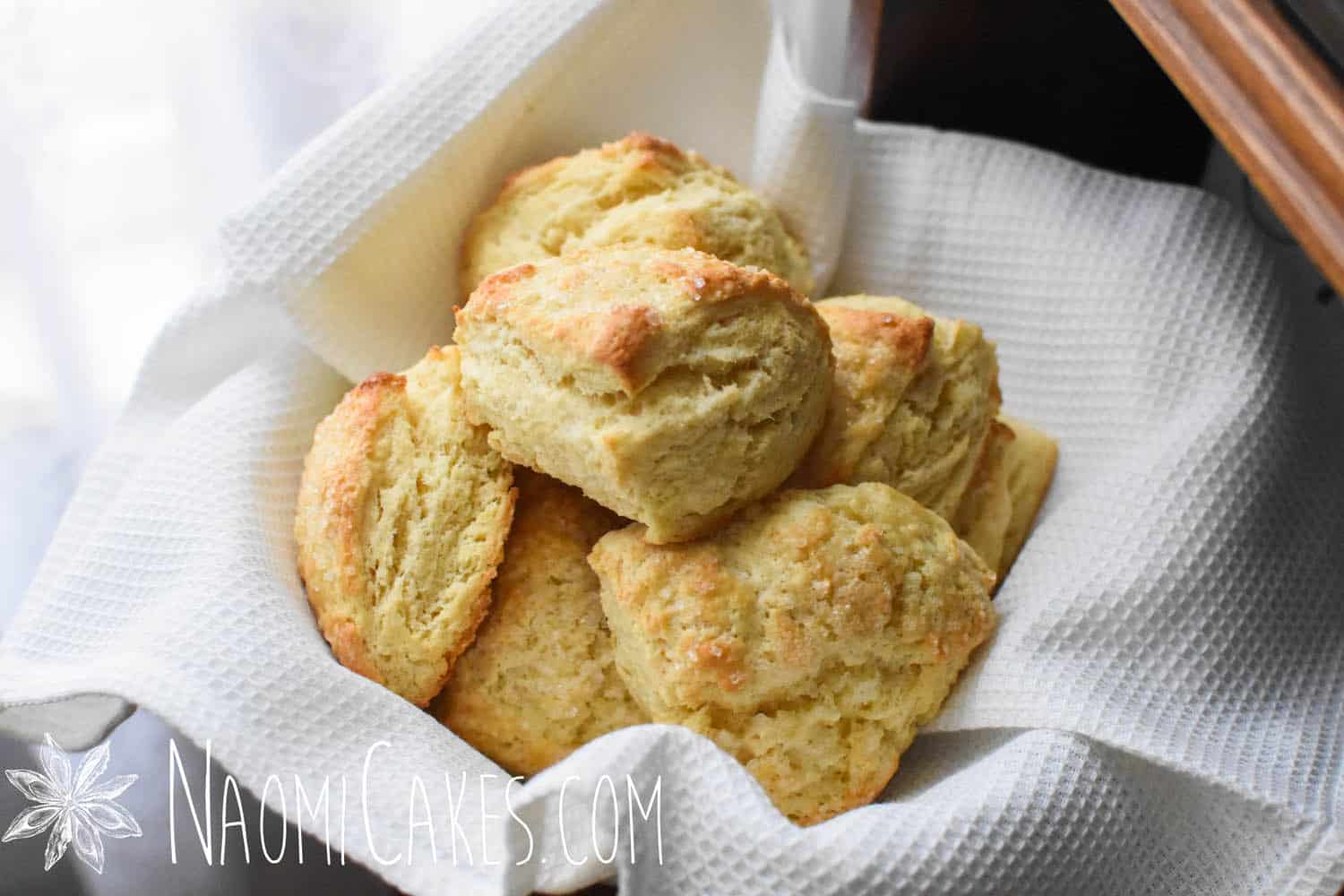
British scones vs American biscuits
British scones and American biscuits are fairly similar, with just a few key differences:
- Flavor
While you can make savory scones, British scones are often served with something sweet, usually for breakfast or afternoon tea. American biscuits, on the other hand, are usually quite salty/savory, and are often served alongside a savory meal or topped with sausage gravy. - Texture
A classic English scone has a flaky texture, with a slightly denser crumb than many American biscuit recipes.
Tips for making perfect, fluffy scones
Making perfect scones is pretty simple, but there are a few tips I can offer to make sure that your scones come out right. Here are my tips for making the best scones, every time!
Follow the recipe
It may seem obvious, but if you are the type to read the ingredients (but not the directions), I’m gonna suggest you take a couple of extra minutes to read how these scones are made so that you get the best, results.
Use cold butter
Cold butter is essential to making sure that you get those perfect, flaky layers from your scones recipe. Some people even use grated frozen butter to make sure that it stays good and cold, but the idea is basically just that you don’t want the butter to get worked into the dough too much. Much like making homemade croissants, Danish pastry, or puff pastry– keeping very cold butter is the key to making sure that you get those incredible buttery layers to show up in the finished product. Simply cut the butter into the flour mixture (using a sharp knife or a pastry cutter) until you have small chunks of butter scattered throughout the dry ingredients.
Don’t overwork the dough
The more you knead/work the dough, the more. you cause the gluten structure of the flour to develop, and the more likely you are to mix in the butter too much. This will do two things: First, developing the gluten from too much kneading will change the texture of your scone dough (making it stronger/tougher, and less likely to “melt in your mouth”). Second, mixing in the butter too much will make it so that your scones don’t produce those beautiful flaky layers.
Don’t over (or under) bake the scones
You should bake your scones only until they are golden brown around the bottom and at the very top. If you underbake your scones, the centres will be doughy; if you overbake them, they will be too dry.

Choosing the best ingredients
Flour
This recipe calls for white all purpose flour.
Baking powder
These scones puff up beautifully with baking powder, similar to how American biscuits are made.
Sugar
This recipe calls for just a touch of sugar, but not enough to make them super sweet. This star of the scone is its buttery layers, meant to be the perfect base to make the jam shine. If you want to make sweet scones, you can double the sugar in this recipe (or to your own taste); just keep in mind, the dough will be a little bit more sticky.
Salt
Use any kind of table salt or sea salt for this recipe.
Milk or Cream
These two can be used interchangeably in this recipe. Just keep in mind that the higher fat content the cream has, the thicker (more dry) your dough may be. Milk will make the dough a little bit stickier.
Lemon juice
Lemon juice is added to the milk or cream to curdle it a little bit and give it a richer flavor. The effect is actually quite similar to buttermilk; so, if you have it on hand, feel free to omit the lemon, and substitute the milk ingredient for buttermilk to achieve a very similar flavor.
Eggs
As a general rule, any baking recipe that calls for “Eggs” is referring to large eggs.
Coarse sugar
You can use regular superfine sugar for the topping, but I like to top mine with coarse bakery-style sugar to make a sparkly, crunchy topping. I also love to use this kind of sugar on my pies and turnovers.
Other
You can easily add citrus zest (such as orange or lemon zest) or dried fruit to this scone recipe to make your own delicious variations! Use this recipe as a master scone recipe, and then use your favorite add-ins (as I have many times) to make it your own.
Can you make scones ahead of time?
Yes! In fact, that’s one thing I love about this recipe. You can entirely prep your scones ahead of time, and pop the tray in the freezer instead of into the oven. Freeze your fully prepared scone dough until solid, and then pop them all into an airtight container or sealed plastic bag to save until you want to have fresh baked scones.
You may need to add an additional 5 minutes to the baking time if you bake them from frozen, but this method works very well and makes it easy to prep scones for any occasion ahead of time!
Using unsalted butter vs. salted butter
As a general rule, in the world of baking unsalted butter is the assumed best choice because you can control how much salt gets added to your recipe. That said, I confess: I often bake with salted butter (in fact, most often, that’s what I have on hand). My rule of thumb for baking with salted butter is this: sub whatever the teaspoon amount of butter in the recipe is for a pinch of salt, or just omit the salt altogether.
Recipes that have a lot of butter, such as croissants, will be too salty if you use salted butter. In cases like that, I recommend always going for unsalted butter, keeping good control over how much ends up in your recipe – and then yes, follow the recipe, and make sure the exact amount of salt recommended goes into your baking project.

How to reheat scones
You can reheat scones in a hot oven for 5 minutes (350 degrees F) or in the microwave for 15-30 seconds.
Ways to serve scones
English scones are typically served for breakfast or tea time, with some kind of jam, butter, and/or cream. Here are a few great recipes to serve on top of your scones:
- Devonshire Cream
- Peach Raspberry Jam
- Tart Apple Butter
- Easy Homemade Rhubarb Sauce
- Blueberry Pie Filling
- Easy Strawberry Orange Marmalade
Other delicious scone recipes
I love making scones, and I’ve made many, many of them in my time. If you enjoy making your own scones, you can check out some of these other recipes as well!
You will need:
- Ingredients (see recipe card)
- Mixing bowl
- Measuring cups and spoons
- Measuring pitcher
- Pastry cutter or paring knife
- Sharp knife
- Pastry Brush
- Parchment paper
- Baking sheets
- Coarse sugar

Light and Flaky Scones
These scones are delicious; light, flaky, buttery, and versatile. And the best thing is that they are not too sweet – making them the perfect base for your favourite jam or lemon curd.
Ingredients
- 2 cups all purpose flour
- 1/4 cup sugar
- 1 Tbsp baking powder
- 1/4 tsp salt
- 1/2 cup cold butter
- 5-6 Tbsp milk or cream
- 1 Tbsp lemon juice
- 2 eggs (with part of 1 white reserved)
- coarse sugar for sprinkling
Instructions
-
In a medium sized mixing bowl, combine the flour, sugar, baking powder, and salt.
-
Using a pastry cutter or your fingertips, blend in the cold butter until it is cut into pea-sized chunks coated with flour.
-
In a separate bowl, combine the 5 Tbsp. milk or cream with lemon juice and let it stand for a minute or so. Then beat in the eggs (setting part of 1 white aside for later), and add the wet mixture to the flour and butter mixture.
-
Use a fork or spoon to roughly bring the dough together; then gently knead until the mixture just comes together into thick, smooth dough. If the mixture seems too dry, add the remaining 1 Tbsp. of milk to soften the dough.
-
Divide the dough into 2 equal portions; then, on a lightly floured work surface, press each section into a 4-5" circle (about 1" thick). Cut each into quarters, and place the cut scones onto a parchment lined baking sheet.
-
Beat the reserved egg white; then brush onto the scones, and sprinkle generously with coarse sugar.
-
Bake at 400 degrees F for 12-15 minutes or until the edges are just lightly golden and the scones are nicely risen.
Recipe Notes
Tip: If you want your scones to have a more flaky look, try keeping the butter chunks a bit more coarse. I like to do this with my fingertips – blending it into the dough until you have little “chips” of butter in there – about the size of fresh coconut shavings. Then continue with the directions as recorded above.
You can also add raisins or other dried fruit to this recipe! I recommend 1/2 cup.

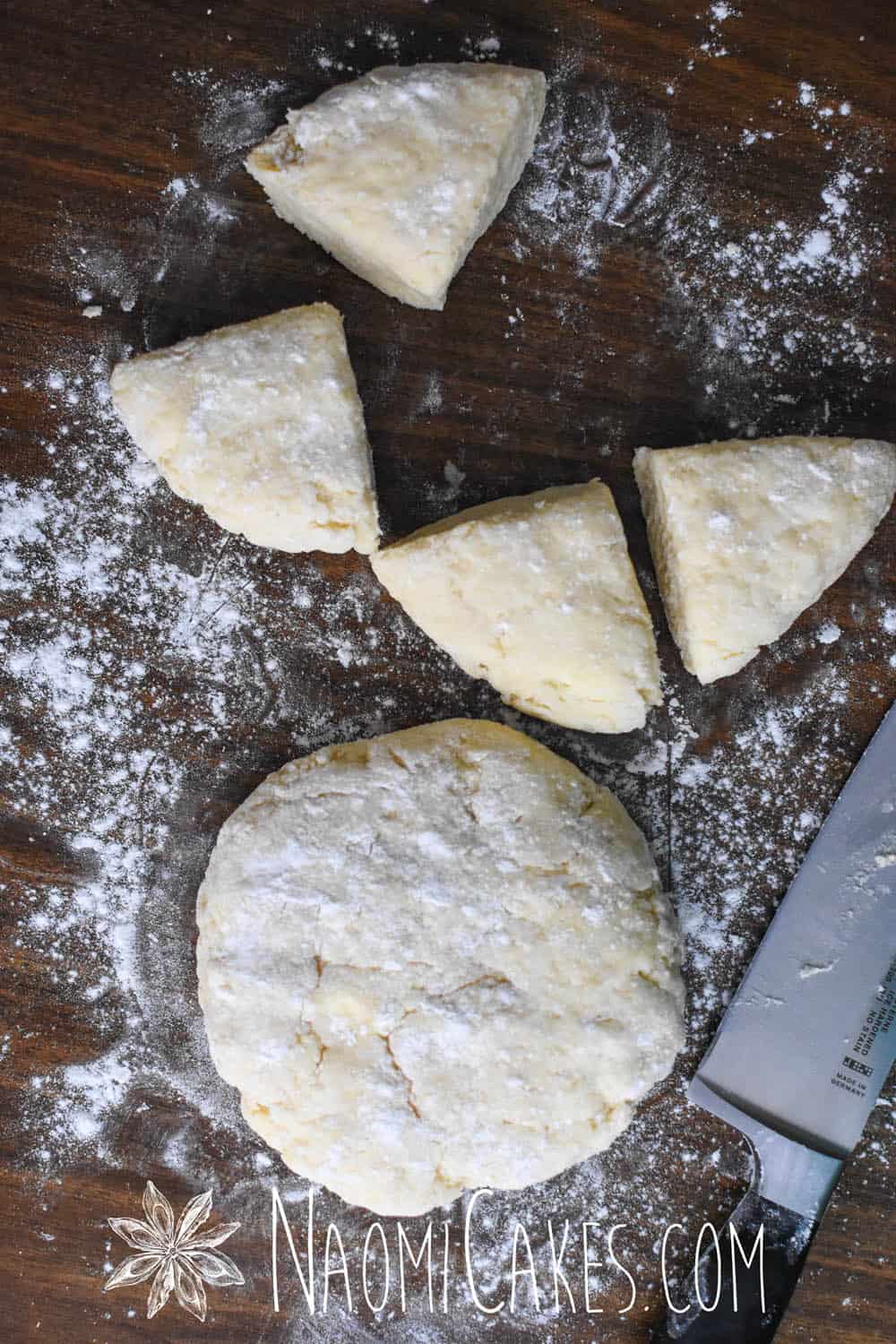
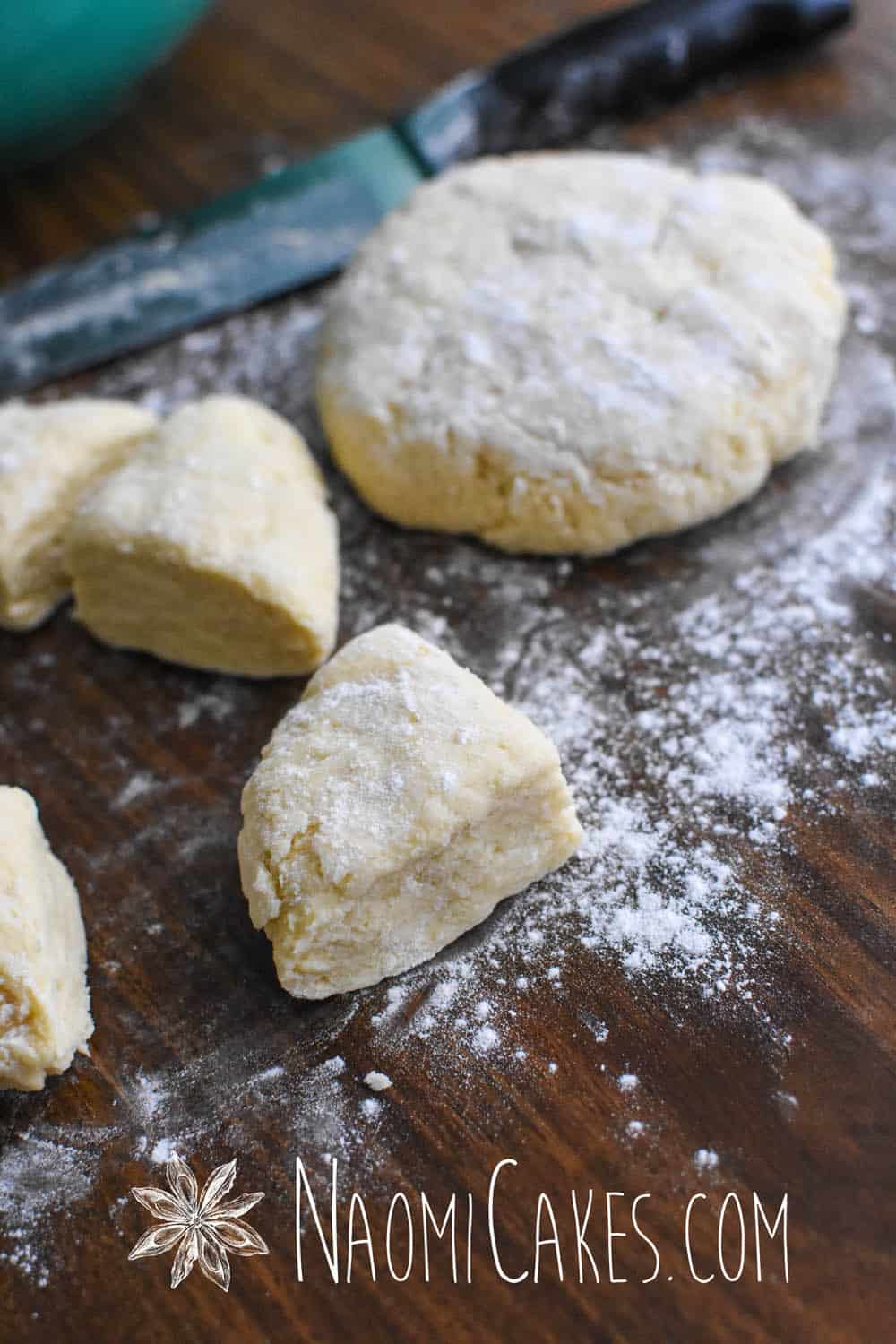
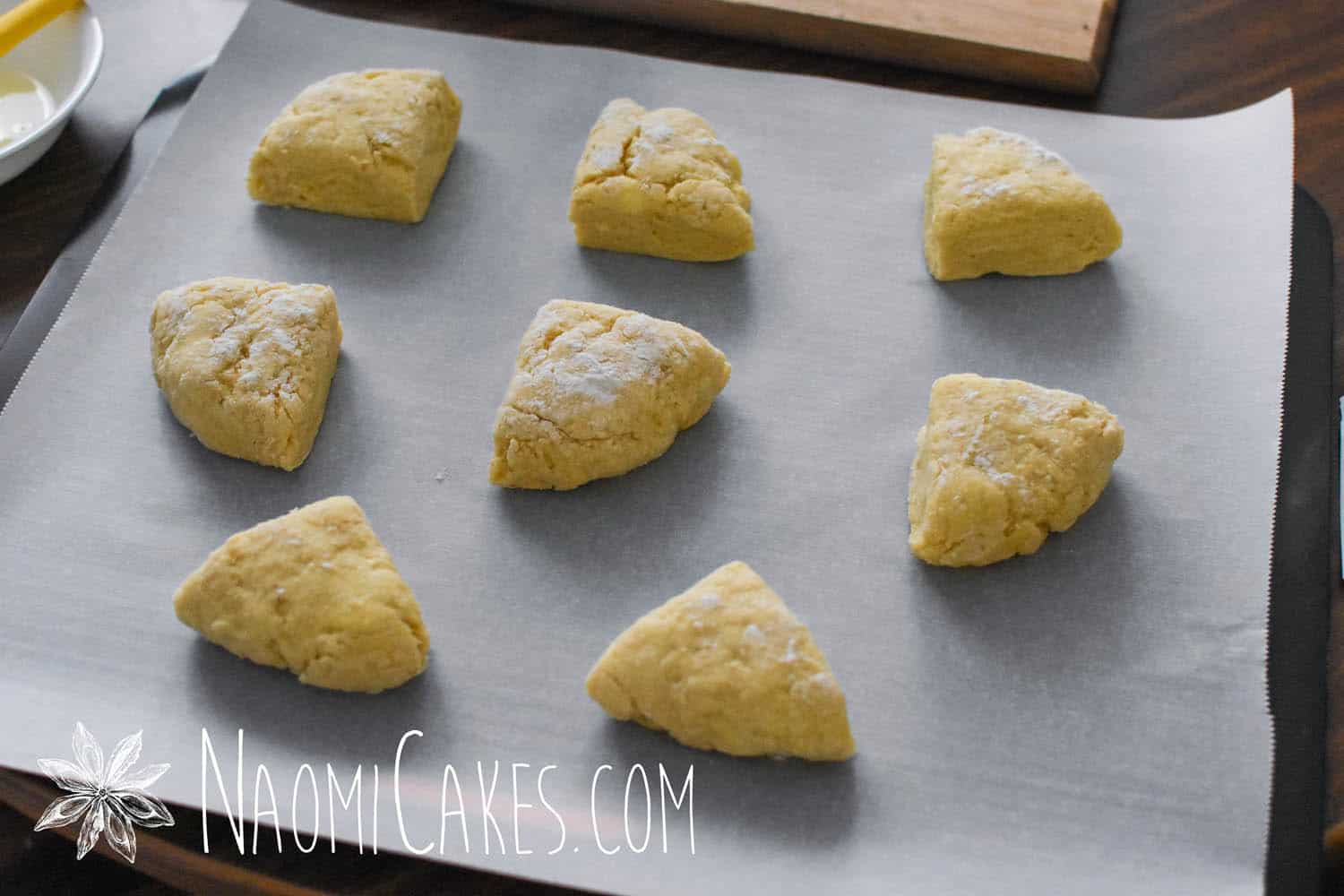
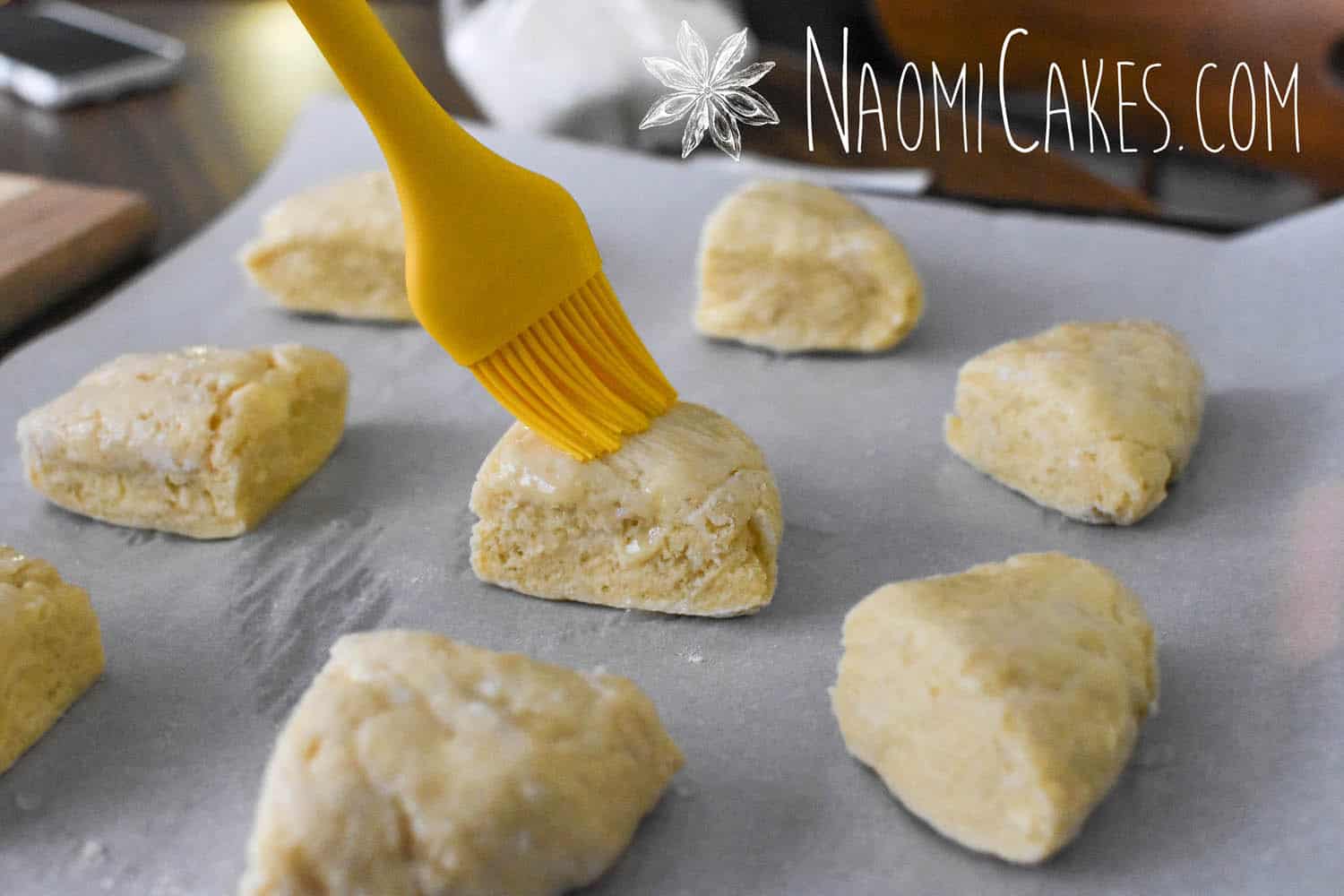
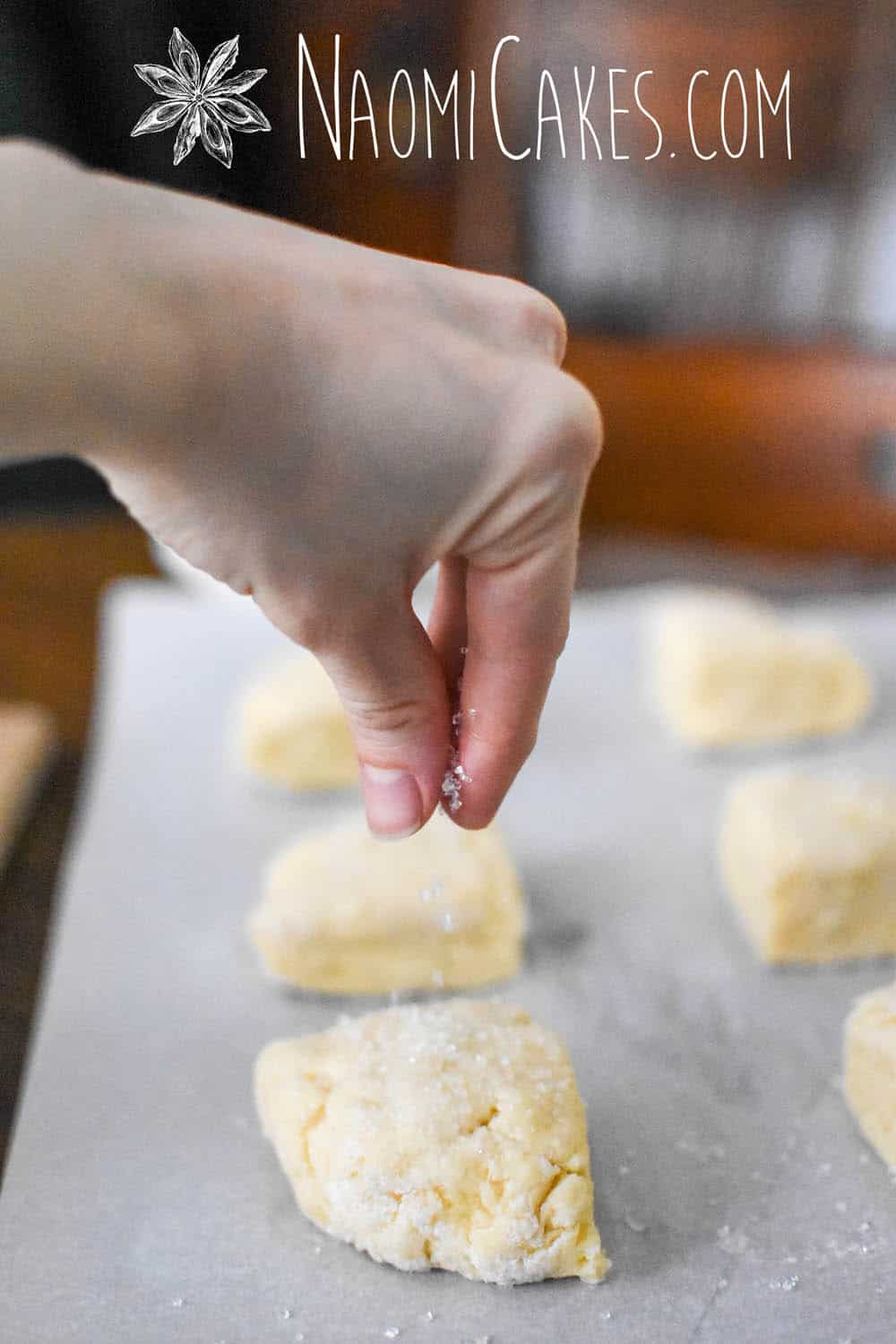

If you like this recipe, you may also like:
That’s all for today! If you like this recipe, let me know in the comments or tag me in your fabulous scone pictures on Instagram @naomicakesofficial. I love to see your great work!
Bye for now,
Naomi
This post contains affiliate links.
My family agrees, these are the best scones EVER! Thank you!
I’m so glad you like them- thanks for the comment!